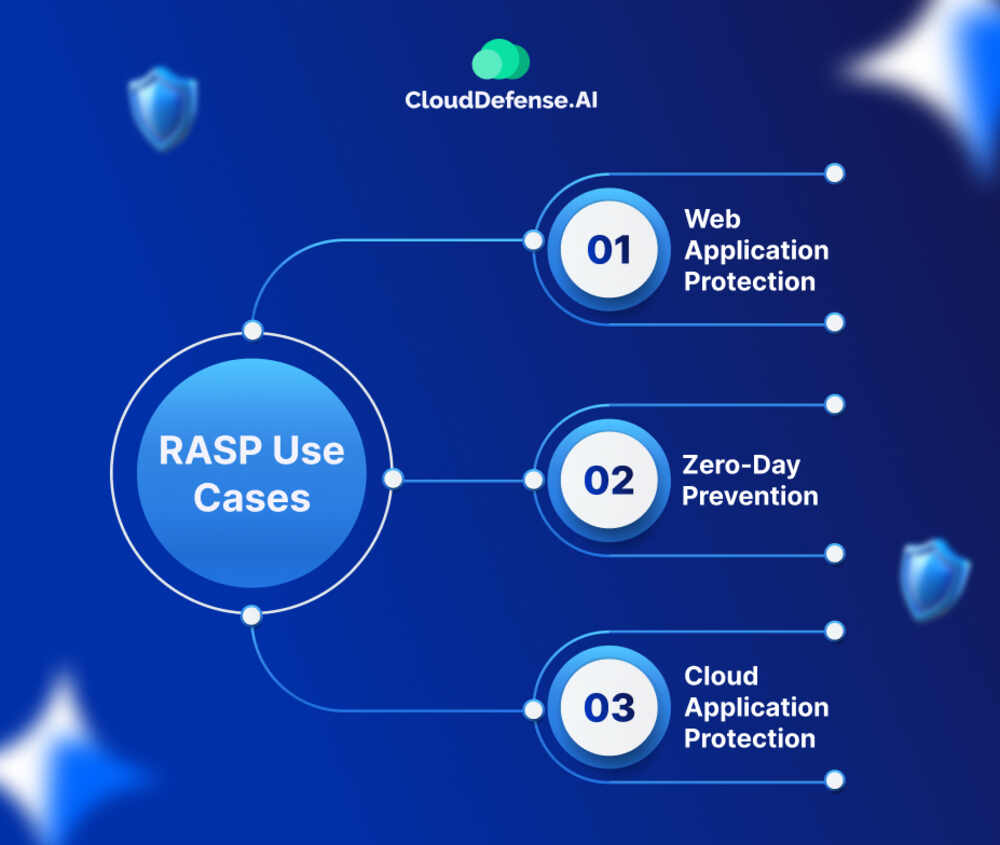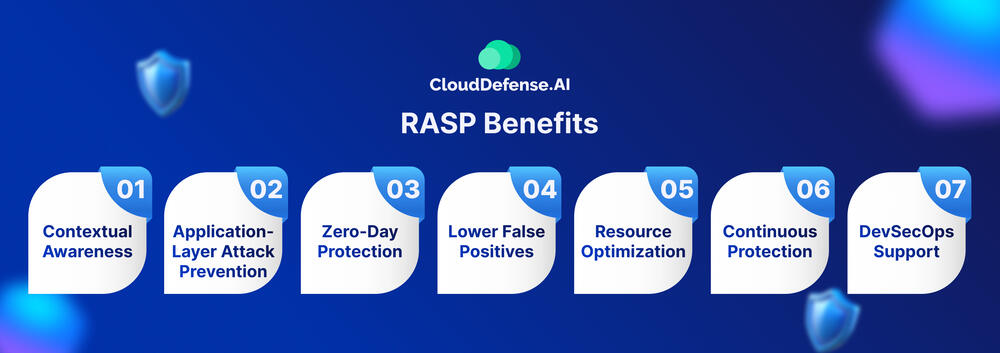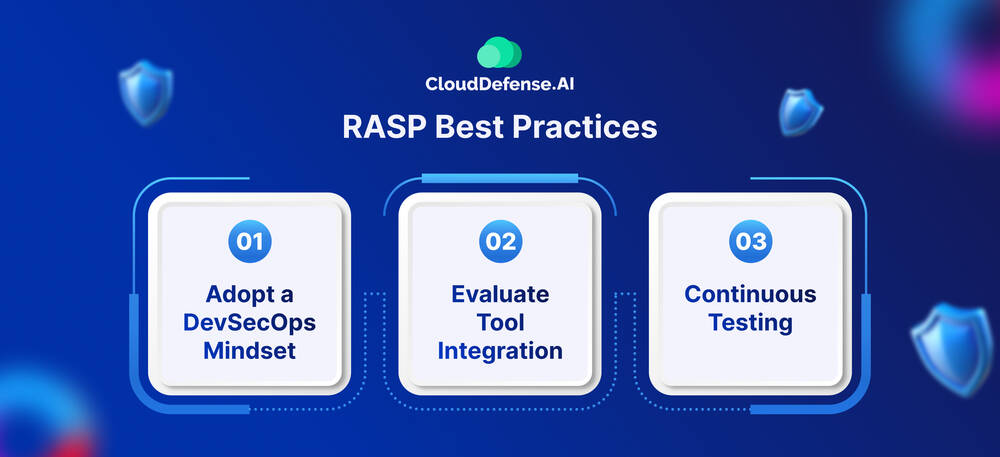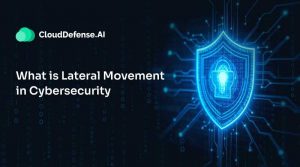What Is Runtime Application Self-Protection (RASP)?
Runtime Application Self-Protection, or RASP, is a security technology designed to protect applications by detecting and responding to threats in real-time as they occur.
By integrating with the application, RASP provides continuous monitoring and analysis of the application’s behavior and data flow. This deep integration allows RASP to identify and block malicious activities, such as attacks exploiting vulnerabilities or abnormal behavior patterns, which traditional security measures might miss.
Why Is RASP Important?
RASP fills gaps left by traditional security measures like Web Application Firewalls and Intrusion Prevention Systems, which primarily monitor network traffic and user sessions without visibility into internal application processes. By operating inside the application, RASP provides real-time monitoring and analysis of its behavior and data flow, enabling it to detect and mitigate threats with higher accuracy and proactivity.
This internal perspective reduces false positives and automates threat mitigation, easing the burden on security teams. As organizations increasingly rely on cloud and hybrid environments, RASP becomes essential for cloud security, ensuring that cloud-based applications are protected from cyberattacks and accessed only by authorized users. Its ability to adapt to evolving threats further enhances its effectiveness, making RASP a critical component of a strong, modern cybersecurity strategy.
RASP Use Cases

RASP offers flexible integration, making it suitable for various applications. Common RASP use cases include:
Web Application Protection:
Web applications and APIs are essential but often vulnerable to attacks due to their exposure to the public Internet. RASP secures these applications by detecting and blocking exploits, reducing cybersecurity risks and the attack surface of web-facing infrastructure.
Zero-Day Prevention:
Organizations may need help to patch critical applications against newly discovered vulnerabilities. RASP provides immediate protection against zero-day vulnerabilities by preventing exploitation until patches can be applied, protecting critical applications, including web apps and APIs.
Cloud Application Protection:
Securing cloud-based applications is challenging because they operate on external, leased infrastructure. RASP integrates with these applications to deliver strong security in a portable, infrastructure-agnostic manner, ensuring consistent protection in cloud environments.
How Does RASP Work?
Runtime Application Self-Protection (RASP) integrates directly with an application to monitor and protect it in real-time. Unlike traditional security tools, RASP operates inside the application, controlling its behavior without altering its code. When a security threat is detected, such as a SQL injection attack, RASP can immediately prevent malicious instructions from executing, thereby protecting sensitive data.
RASP functions in diagnostic mode to alert potential issues and in protection mode to actively block threats by terminating user sessions, stopping application execution, or notifying security personnel. Implementation can be done by embedding RASP function calls into the application’s source code for precise protection or by wrapping a completed application for broader security.
This close integration allows RASP to detect and respond more effectively to vulnerabilities and zero-day attacks, providing customized and strong protection specific to the application’s needs.
RASP vs WAF
RASP and WAFs are both secure web applications, but they approach the task differently and have distinct strengths and limitations. The table below provides a better understanding of the differences.
| Feature | WAF | RASP |
| Primary Function | Filters, monitors, and analyzes HTTP/HTTPS traffic | Monitors and protects application behavior in real-time |
| Operation Level | Perimeter (network level) | Within the application (runtime level) |
| Threat Detection | Detects known attack patterns and anomalies in web traffic | Detects attacks based on effects on application behavior |
| Visibility | Limited to web traffic | Deep visibility into the application’s internal state and data flow |
| First Line Defense | Yes, blocks threats before they reach the application | No, acts after initial filtering to catch missed threats |
| Sophisticated Threat Handling | Limited, may miss complex threats affecting application internals | Strong, identifies and blocks sophisticated and zero-day attacks |
| Impact on Performance | Minimal effect on application performance | May affect application performance due to runtime integration |
| Deployment | Deployed at the network edge | Embedded within the application or added as a wrapper |
| Cloud Compatibility | Effective as part of network security | Essential for cloud-based applications, providing portable security |
| Action on Threats | Blocks or allows traffic based on rules | Terminates sessions, stops application execution, alerts security personnel |
| Complementary Use | Serves as the initial defense layer | Acts as a secondary defense, addressing threats that bypass WAF |
RASP Benefits

RASP has a fair share of benefits that can benefit businesses. We have outlined these benefits below.
Contextual Awareness
RASP offers detailed insights into the application’s current state, data, and code. This contextual awareness is invaluable for investigating, triaging, and remediating vulnerabilities. By understanding where and how vulnerabilities can be exploited, RASP aids in precise and effective security interventions.
Application-Layer Attack Prevention
RASP provides deep visibility into the application layer, enabling it to detect and block a wide range of attacks, including zero-day attacks, cross-site scripting (XSS), SQL injection, and DoS/DDoS attacks. This direct integration with the application ensures comprehensive protection against sophisticated threats.
Zero-Day Protection
Unlike traditional signature-based detection systems, RASP can identify and respond to anomalous behaviors within the application. This capability allows it to detect and block zero-day attacks by observing how they impact the application’s functionality.
Lower False Positives
With deep insights into the application’s internals, RASP can accurately differentiate between actual threats and benign activities. This significantly reduces false positives, decreasing the workload on security teams and allowing them to focus on genuine security incidents.
Resource Optimization
RASP automates routine application monitoring and event response, freeing IT teams to concentrate on tasks requiring human intervention. Its high accuracy reduces the number of alerts and false positives, further optimizing resource use and enhancing operational efficiency.
Continuous Protection
Runtime Application Self-Protection provides continuous, code-level protection, ensuring applications remain secure regardless of deployment environment—whether in the cloud, on-premises, or hybrid settings. This consistent protection does not require retooling, even when applications are updated or redeployed, offering strong and ongoing security with minimal maintenance.
DevSecOps Support
RASP integrates seamlessly into DevOps continuous integration and deployment (CI/CD) pipelines. This integration helps developers identify and remediate vulnerabilities during development, supporting interactive application security testing and enhancing overall application security. The contextual information provided by RASP aids in strengthening code and reducing security risks throughout the development lifecycle.
RASP Best Practices

Organizations can fully reap the benefits of RASP solutions by following a set of best practices. This helps to ensure strong application security while maintaining optimal performance and smooth integration with existing tools and processes.
Adopt a DevSecOps Mindset
While RASP solutions are powerful for defending against specific types of cyberattacks, they should not be the sole line of defense. Foster a culture of cybersecurity by integrating security into every phase of the software development lifecycle. This DevSecOps approach ensures that security considerations are embedded from the beginning, enhancing overall protection.
Evaluate Tool Integration
When selecting a RASP solution, consider how it will interact with your existing security tools. Advanced RASP solutions often offer integration capabilities with Security Information and Event Management (SIEM) systems, Dynamic Application Security Testing (DAST) tools, and other security solutions. Ensuring compatibility and smooth integration will enhance your organization’s overall security posture.
Continuous Testing
Before fully deploying a RASP solution, conduct rigorous testing to monitor its impact on application performance. Regularly test how the RASP tool integrates with each application to identify performance issues or unusual behaviors. This proactive approach allows IT teams to address anomalies swiftly and ensures that the RASP solution operates effectively without disrupting standard application functionality.
Final Words
Runtime Application Self-Protection represents a significant advancement in application security, offering real-time, context-aware protection against sophisticated threats, including zero-day vulnerabilities.
As security increasingly integrates into the development lifecycle, RASP will remain crucial, especially for protecting legacy applications. Security professionals emphasize the need for self-testing and self-protecting apps. While RASP continues to evolve, its role in enhancing application resilience and security is undeniable, making it a vital component of modern cybersecurity strategies.







